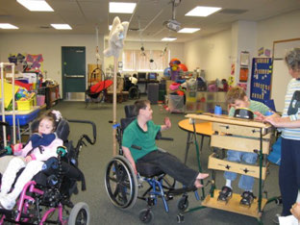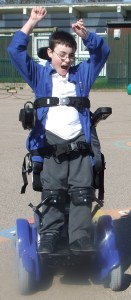Life can be hard at times, and we all need a little help every now and then. For an individual with a disability, they would need more help with daily living skills and with tasks that others take for granted as part of their usual routines. In the past, persons with disabilities were restricted on numerous skills and regular routines were quite a challenging task to do independently each day. They needed assistance from their family members, nurses, personal care assistants, and other aiding staff. Although, these individuals play a significant and very meaningful role to the well-being in the lives of those with disabilities, and are most appreciated, some people felt that their dignity and having more independence would never be an option anymore. For some families, (especially as they get older) their ability to care for their disabled children can be difficult too.
 Thanks to modern technology, known as Assistive Technology, both children and adults can live with more independence and security than ever before. Assistive Technology (“AT”) includes devices, equipment, services, and support to those living with a disability with the main purpose to help them live as independently as possible and increase their functional abilities during work, at home, school, and at play.
Thanks to modern technology, known as Assistive Technology, both children and adults can live with more independence and security than ever before. Assistive Technology (“AT”) includes devices, equipment, services, and support to those living with a disability with the main purpose to help them live as independently as possible and increase their functional abilities during work, at home, school, and at play.
AT devices and equipment are any item, piece of equipment, or a prod uct that is used to allow others to communicate, learn, play, achieve, and work, with independence in their community. Some AT services include power wheelchairs and scooters; adapted vehicles; adapted strollers, car seats, and walkers; large print books, phones, and screens; lifts (pool, stair, ceiling, platform); home modifications (grab bars, ramps, standing devices, walk-in tubs); computers with specialized software; communication devices; hearing and low vision aids. All of these can be accessed through agencies and programs that specialize in working with individuals with disabilities.
uct that is used to allow others to communicate, learn, play, achieve, and work, with independence in their community. Some AT services include power wheelchairs and scooters; adapted vehicles; adapted strollers, car seats, and walkers; large print books, phones, and screens; lifts (pool, stair, ceiling, platform); home modifications (grab bars, ramps, standing devices, walk-in tubs); computers with specialized software; communication devices; hearing and low vision aids. All of these can be accessed through agencies and programs that specialize in working with individuals with disabilities.
Another very modern approach to Assistive Technology is The Butler System, provided by SimplyHome. Although SimplyHome is based out of North Carolina, it services anywhere in the US. They are an affiliation of care providers who have been providing supports for the disabled. The Butler System allows you to have security and peace of mind as it includes various sensors installed around your home that notify family members, caregivers, or the staff at their Call Center if something happens (or does not happen as it should) around your home. Some examples of these sensors are if someone falls out of bed or if the stove was left on longer than usual. These sensors will pick up on these and then notify your designated family members, caregivers, or the Call Center. There is also a website that allows you to see events as they happen, see historical information, and control things like lights or appliances that have been left on.
One of the first things that come to mind after thinking about such equipment, is the cost of it, and then secondly, how to obtain them and then have them installed (depending upon the device needed). Fortunately, there are programs available at UCP Central PA’s Changing Hands, which reuses equipment and devices for all ages free of charge. There are loan programs available, also for all ages, all income levels, and any disability.
 Such programs also can provide tips on how to access both public and private resources. Additionally, you can check with your insurance company to see if they cover any of these devices. You will also not have to worry so much about how get the equipment set up in your home, since there are services available to do home modifications who can design and build specialized equipment. Living comfortably at your home in a supportive environment, while having more independence really is an option after all for your family member. It might be also helpful to have a medical identification bracelet for your loved one. These bracelets have saved lives by allowing emergency responders treat them more effectively, and also overall identify the person if they are lost. Flyers about medical ID bracelets can be found at local pharmacies and are reasonably priced.
Such programs also can provide tips on how to access both public and private resources. Additionally, you can check with your insurance company to see if they cover any of these devices. You will also not have to worry so much about how get the equipment set up in your home, since there are services available to do home modifications who can design and build specialized equipment. Living comfortably at your home in a supportive environment, while having more independence really is an option after all for your family member. It might be also helpful to have a medical identification bracelet for your loved one. These bracelets have saved lives by allowing emergency responders treat them more effectively, and also overall identify the person if they are lost. Flyers about medical ID bracelets can be found at local pharmacies and are reasonably priced.
Here are a few additional resources on AT devices: www.WestshoreBath.com; www.hlaa-pa.org; www.disabilities.temple.edu/tddp; www.viewpointmobility.com; www.BMFinancing.com; www.procare-medical.com; www.prismmedicalinc.com; www.handicare.com; www.pviramps.com; www.customizersconversions.com; www.vrocp.org

